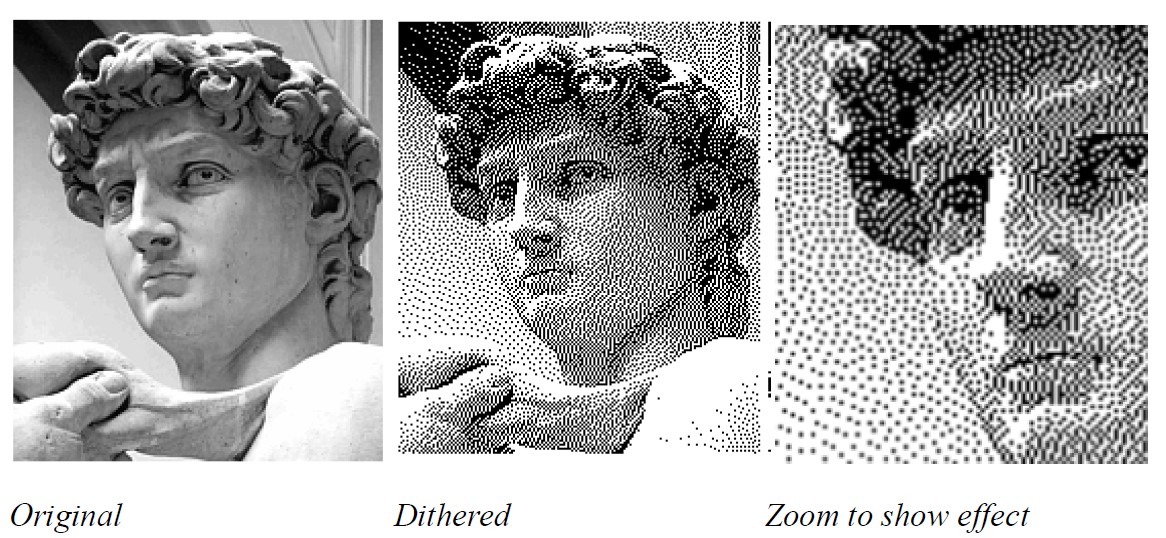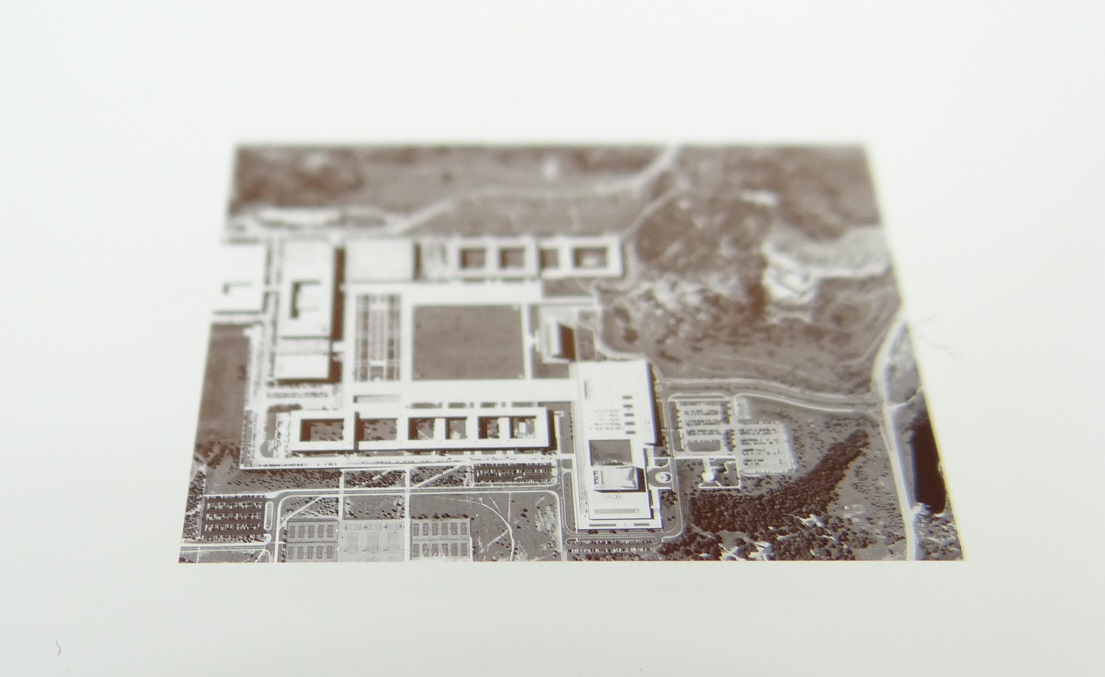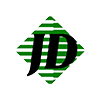DITHERED GREYSCALE OPTICAL MASKS
Dithering is a process of representing grey levels to the human eye by placing certain sized dots or patterns close to each other, varying them in size and shape to represent a grey tone. This method has been used for many years in the printing and newspaper industry; however, we have the ability to take this graphics pattern to a whole new level due to the tiny pixel sizes that we can generate.
We take an existing greyscale or colour image and run it through some graphics software (such as Corel Draw or Adobe Illustrator) to apply a dithering process, sometimes called a halftone process. The end result is a binary mask that appears grey to a lens or video due to it being unable to resolve the pixels individually. If the lens/video in question has the ability to resolve very small features, and we have to use very small pixels, then one problem with the dithered process is the enormous database sizes that this can generate – quite easily into the gigabyte range. Because of this, very high resolutions over large areas may not be possible.

EXAMPLES
Below shows an aerial photograph of a building, parking, and grounds which has been converted by a dithering process into a raster image, using a fairly large pixel of 12um. This image was then projected in a normal way onto a soda-lime glass photomask. It is impossible for the human eye to see any pixelation of any sort in the picture.





